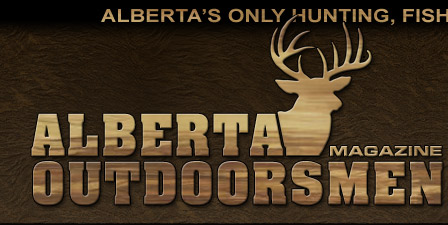|
 |
As Brad Fenson wrote in his News & Notes column in the July issue of Alberta Outdoorsmen, Elk Island National Park (EINP) is considering the use of hunting to curtail burgeoning populations of bison, elk and moose. However, there has been pushback from a few organizations and animal-rights activists who have been speaking contemptuously of the idea of hunting in a national park.
In a recent article written in the Wildlands Advocate, the official publication of the Alberta Wilderness Association (AWA), editor Ian Urquhart writes, “While AWA is neutral when it comes to hunting, it believes very strongly that hunting has no place in our national parks. AWA regards it as an especially sad irony that Parks Canada is considering the introduction of hunting in a national park that was created in order to protect wildlife.”
Well, sort of “neutral” when it comes to hunting.
 |
| A limited-entry hunt in Elk Island National Park just makes sense |
A lack of predators within the fenced park has provided EINP with 140 surplus bison, 250 surplus elk, and 120 surplus moose, which has led to over-browsing, creating a negative effect on the health of the park.
Short of hunting, EINP’s options are limited. They could translocate the surplus bison to other locations, or auction them off, as they are considered livestock. But this isn’t possible with the elk or moose that might not be disease-free, chronic wasting disease is on the park’s doorstep. Other options include selling the surplus animals to slaughterhouses or altering the park’s fences to allow the elk and moose to jump over them, leaving the park. The problem here is that lowering the fences doesn’t guarantee animals will leave, nor does it prevent other animals from entering the park, including cwd-infected deer. As well, surrounding landowners might not be too enthralled about having a newly created abundance of elk and moose destroying their crops and becoming road hazards.
While hunting in national parks for animal reduction isn’t common, it has been used before and it is still being used in both Terra Nova and Gros Morne National Parks in Newfoundland to “reduce unnaturally high moose populations.” There, licences are “allocated to eligible harvesters through a random draw process administered by the Government of Newfoundland and Labrador.”
Some of those opposed to hunting in EINP believe that a re-introduction of wolves to the park would solve the problem.
If you remember, a few years ago, an estimated wolf pack of 15 to 20 individuals hunted EINP and the Cooking Lake-Blackfoot Provincial Recreation Area. However, those wolves had more of a taste for cattle than they did elk and moose. More than two dozen cattle went missing or were killed by the wolves in one summer alone. Parks and government officials then gave the Blackfoot Grazing Association permission to kill six members of that wolf pack in response. There was much uproar from many of the same folks that now oppose hunting in EINP but the cull went ahead anyway. For one reason or another, today, the entire EINP wolf pack is gone.
While a re-introduction of wolves to EINP may appear to be a good idea, and maybe it is, what guarantee is there that they too wouldn’t develop a taste for beef and the entire situation unfold once again?
By my estimation, a limited-entry draw for a hunt in EINP makes the most sense. There would be no cost associated to a hunt and in fact, the monies gained through a hunt could be used for further projects within EINP.
The park hopes to have a management plan in place by this fall. Let’s hope that plan includes a limited-entry hunt. ■
For previous Outdoor Pursuits click here.
|
|
|
|


